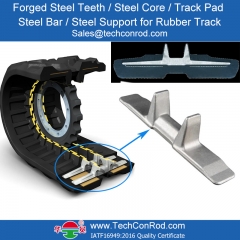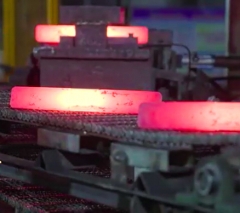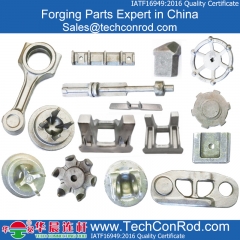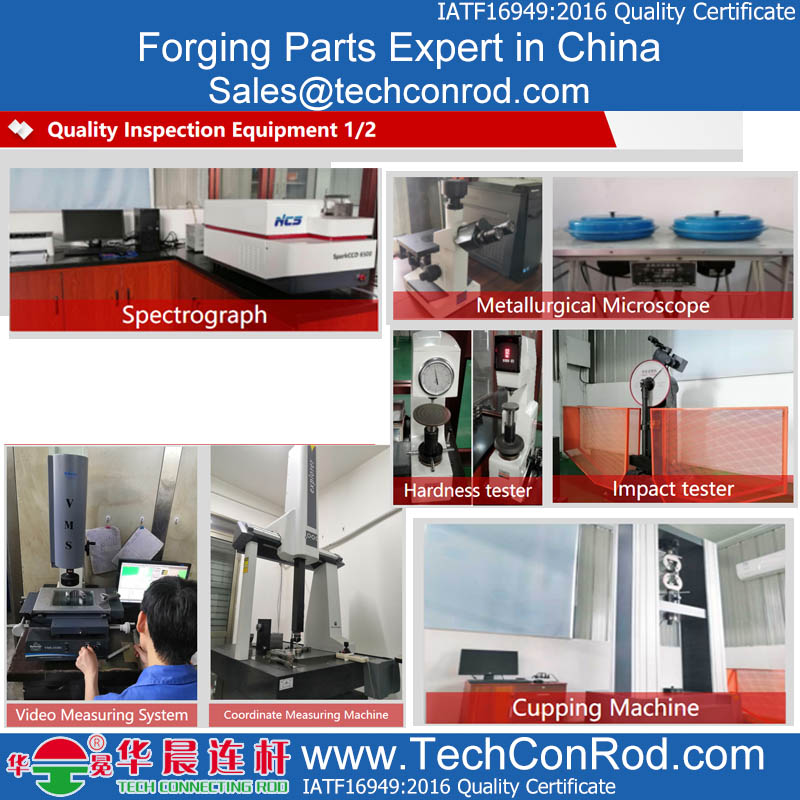 +86-151 9217 7108
+86-151 9217 7108
 +86-151 9217 7108
+86-151 9217 7108

High quality steel Die Forging parts with material 40Cr 42CrMo and C70S6
read more
High quality steel Die Forging parts with material 40Cr 42CrMo and C70S6
read more
High quality steel forging parts with material 40Cr 42CrMo and C70S6
read more
OEM high performance steel forging parts at China price.
read moreThe main inspection methods of forgings
IATF16949:2016 certified forging manufacturer
The main inspection methods of forgings are as below:
Chemical composition analysis
Mechanical property test
Low magnification test
Metallographic high magnification inspection and NDT.
Chemical composition analysis
The general chemical composition analysis is mainly the content of carbon, manganese, silicon, sulfur and alloy elements. Forgings shall be sampled from the equivalent riser end. Important parts shall be sampled from the water and riser end in order to understand the segregation degree. For special parts or defects, it is often necessary to analyze the content of gas, inclusions and trace impurities for quality confirmation or research.
Mechanical property test
The mechanical property tests commonly used by forging factories are hardness, drawing, impact and bending tests. From the performance data, we can find the problems of the material, such as bubbles, porosity, cracks, grain size and temper brittleness in the steel can often be reflected on the fracture of the mechanical property sample.
Low magnification test
Sulfur printing, pickling and fracture are common low magnification inspection items. Sulfur print can show the distribution of sulfur on the cross section; Pickling can show various macro defects such as component segregation, porosity, shrinkage cavity, subcutaneous bubble, inclusion, peeling, white spot crack, etc. on the section; Fracture inspection is a simple and applicable method to find defects that can not be revealed by sulfur printing and pickling.
Metallographic high magnification test
This method is widely used for microscopic inspection and also for studying the microscopic characteristics of macroscopic defects. The optical microscope is used to observe the prepared metallographic sample under the magnification of 50 to 2000 times to check the inclusions, metal microstructure and grain size.
NDT
Commonly used methods include magnetic powder, fluorescence, coloring, ray, eddy current and ultrasonic wave. The correct selection of flaw detection methods to comprehensively and carefully inspect the surface and internal defects of forgings can accurately judge the size, quantity and distribution of defects. In the quality inspection of forgings, nondestructive testing has become one of the most important methods.
We are a professional manufacturer and supplier of high performance Forging Parts in China with 20 years' forging technology experience and offers an extensive range forging parts in 40Cr, 42CrMo and C70S6 steel material. At Yida, we specialize in high-volume production steel forgings with material 40Cr, 42CrMo and C70S6 etc, including:
Automotive
Truck & Bus
Industrial
Agriculture
Construction
General Aviation
Off-Highway
Marine
Train/locomotive parts
Road trailer parts
Conveyor parts
Hand tools
Crane parts
Steering arms and other parts
Engine piston and connecting rod
Pneumatic and hydraulic fittings and parts
Valve and pump parts
Exercise equipment parts
Steel forging is an extremely versatile process which can be used to produce a broad spectrum of parts for all types of industries. If you’re unsure whether steel forging can produce the part you need, please contact us and our experienced staff are ready to provide you a professional proposal.

 online
online 0086-635-4560298
0086-635-4560298 0086-635-4560298
0086-635-4560298 info@techconrod.com
info@techconrod.com +86-151 9217 7108
+86-151 9217 7108